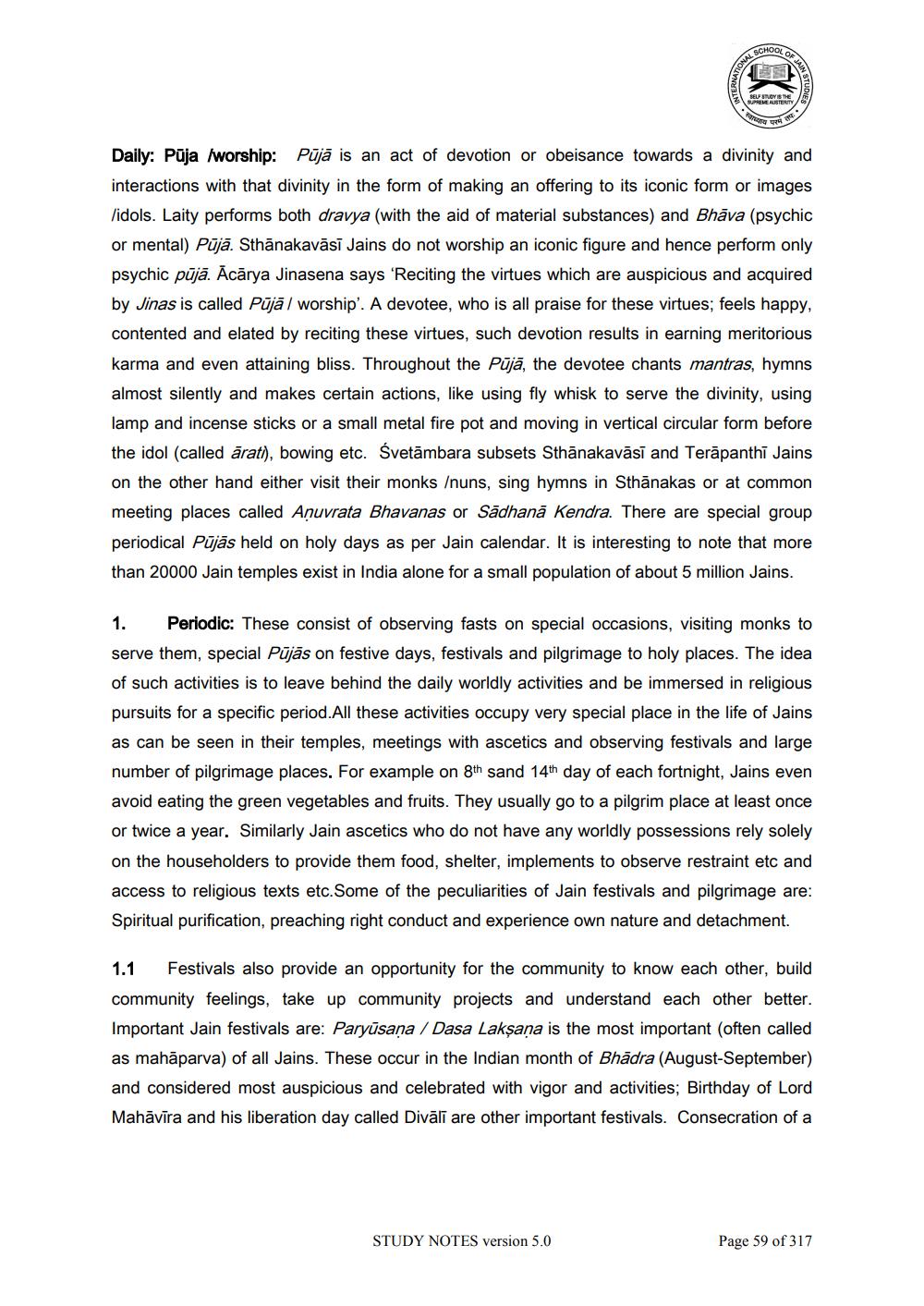________________
Daily: Puja /worship: Pūjā is an act of devotion or obeisance towards a divinity and interactions with that divinity in the form of making an offering to its iconic form or images lidols. Laity performs both dravya (with the aid of material substances) and Bhāva (psychic or mental) Pūjā. Sthānakavāsi Jains do not worship an iconic figure and hence perform only psychic pūjā. Ācārya Jinasena says 'Reciting the virtues which are auspicious and acquired by Jinas is called Pūjā / worship'. A devotee, who is all praise for these virtues; feels happy, contented and elated by reciting these virtues, such devotion results in earning meritorious karma and even attaining bliss. Throughout the Pūjā, the devotee chants mantras, hymns almost silently and makes certain actions, like using fly whisk to serve the divinity, using lamp and incense sticks or a small metal fire pot and moving in vertical circular form before the idol (called ārati), bowing etc. Śvetāmbara subsets Sthānakavāsí and Terāpanthi Jains on the other hand either visit their monks /nuns, sing hymns in Sthānakas or at common meeting places called Aņuvrata Bhavanas or Sadhana Kendra. There are special group periodical Pūjās held on holy days as per Jain calendar. It is interesting to note that more than 20000 Jain temples exist in India alone for a small population of about 5 million Jains.
1. Periodic: These consist of observing fasts on special occasions, visiting monks to serve them, special Pūjas on festive days, festivals and pilgrimage to holy places. The idea of such activities is to leave behind the daily worldly activities and be immersed in religious pursuits for a specific period.All these activities occupy very special place in the life of Jains as can be seen in their temples, meetings with ascetics and observing festivals and large number of pilgrimage places. For example on 8th sand 14th day of each fortnight, Jains even avoid eating the green vegetables and fruits. They usually go to a pilgrim place at least once or twice a year. Similarly Jain ascetics who do not have any worldly possessions rely solely on the householders to provide them food, shelter, implements to observe restraint etc and access to religious texts etc. Some of the peculiarities of Jain festivals and pilgrimage are: Spiritual purification, preaching right conduct and experience own nature and detachment.
1.1 Festivals also provide an opportunity for the community to know each other, build community feelings, take up community projects and understand each other better. Important Jain festivals are: Paryūsana / Dasa Laksana is the most important (often called as mahāparva) of all Jains. These occur in the Indian month of Bhādra (August-September) and considered most auspicious and celebrated with vigor and activities; Birthday of Lord Mahāvīra and his liberation day called Divālī are other important festivals. Consecration of a
STUDY NOTES version 5.0
Page 59 of 317




